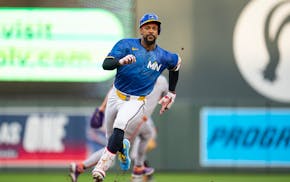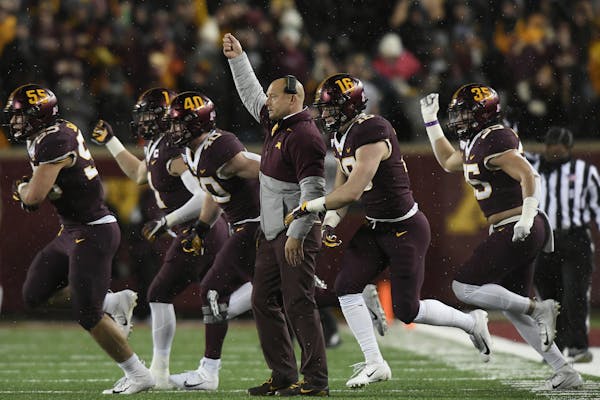On Aug. 11, Big Ten decisionmakers postponed fall sports over growing concerns around the coronavirus pandemic. The hope was that the football season might be played in the spring.
But just over five weeks later, the conference reversed course and announced a plan to resume play in the fall with a nine-game schedule beginning the weekend of Oct. 23-24.
Plenty of questions remain unanswered, but information released by the Big Ten and a conference call with leaders Wednesday shed light on the plan. Here is what we know:
Q: What changed?
A: That's the big question, right? Several higher-ups from around the Big Ten gave a variation of the same answer: their comfort level with safety protocols improved dramatically over the past five weeks.
"The only focus and goal we've had … is allowing our student-athletes to safely return to competition," Big Ten Commissioner Kevin Warren said. "Once we reached the point that we felt we were comfortable to proceed forward, we were able to go forward."
Dr. Jim Borchers, the head team physician for Ohio State and the co-chair of the Big Ten's return to competition's medical task force, echoed that.
"In medicine very often when things are unclear we pause," he said. "We've ended up in a place where we feel comfortable that we have a path forward that's going to emphasize that health and safety."
Q: What will the schedule look like?
A: Wisconsin athletic director Barry Alvarez, who chaired the return to competition scheduling committee, provided a good deal of clarity.
Opening weekend is slated for Oct. 23-24. Each Big Ten team will play eight regular-season league games, followed by a "plus one" game on conference championship weekend Dec. 18-19 in which each place finisher from the Big Ten East and West will play each other (1 vs. 1, 2 vs. 2, etc.).
That's a compressed schedule with no byes. Nine weeks, nine games. The schedule isn't finished, but Alvarez said it should be done later this week.
"We wanted to make it a meaningful season, and nine games is what we felt was meaningful," Alvarez said.
Q: Does that mean Big Ten teams can still compete for the College Football Playoff and bowl games?
A: It sure sounds like it. Northwestern AD Jim Phillips, who chaired the return to competition television committee, said based on conversations he has had, "I think that's a real possibility. Our student-athletes across 14 institutions are really excited about it. … To play a regular season in a meaningful way, to weave it in with our partners at Fox and ESPN, and have it culminate in the CFP and traditional bowl games, is incredibly exciting."
Q: Ah, so it's all about TV?
A: You said that, not me.
Q: But what if some teams don't make it through all nine games because of COVID complications?
A: Alvarez sidestepped that question. Borchers said: "We believe the safety protocols will allow us to complete this season."
Q: So what are some of those protocols?
A: Starting no later than Sept. 30, Big Ten football players will receive daily rapid testing for COVID — paid for by the conference, Warren said — in an effort to contain the virus. Positive rapid tests will be followed up with more testing.
"We're trying to rapidly identify anyone who might have the virus and immediately remove them from their environment," Borchers said.
The positive rate of teams and the surrounding population will determine whether they can practice and play. A team rate of 2% or less means they are in the clear; between 2 and 5% will mean an adjustment in practice plans and enhanced protocols; higher than 5%, plus an overall population positive rate of 7.5% or higher, means teams need to stop practice and competition for a minimum of seven days.
A player who tests positive can't return to playing in a game until at least 21 days from the test.
Q: But campuses are being forced into remote learning because of high positive rates. How can they expect to keep football players safe?
A: The short answers: constant testing and putting the burden on athletes to be safe.
"The message we've been delivering to athletes from minute one is their individual responsibility, obligation to teams and communities," said Penn State athletic director Sandy Barbour. "This return to competition takes it up a couple levels."
Northwestern President Morton Schapiro — also the return to competition task force steering committee chairman and chairman of the council for presidents and chancellors — said he wrestled with the decision given that Northwestern is almost entirely in virtual learning mode. Northwestern was one of the 11 schools originally voting to postpone football.
"The feeling was that if we could play football safely and the Big Ten was going to meet the cost of daily testing, I don't see any reason why we wouldn't go forward with it," Schapiro said. "But I did grapple with that."
Q: What about other fall sports that were postponed. Are they resuming, too?
A: That remains to be seen. Warren did say other fall athletes will receive daily COVID testing. The conference on Thursday will start discussing the resumption of those sports — and winter sports that start in the fall, such as basketball and hockey — and updates will be announced shortly.
Warren did note that fall championships in some sports already have been moved to the spring, which complicates things.
Q: Will the conference allow fans at football games?
A: No — at least not regular ticketed fans.
"We are not going to permit fans in general," Barbour said. "We are looking to see what we can do on a campus-by-campus basis to accommodate families of student athletes and families of staff. But there will be no public sale of tickets."
Q: But wait, the Gophers just cut three programs. Shouldn't the return of football and the associated television money lessen that burden and allow those programs to survive?
A: In theory, yes. But the announcement last week that Minnesota is eliminating men's track and field, men's gymnastics and men's tennis has as much to do with Title IX compliance as anything. But it sure would have been harder to make the announcement of those cuts after the announcement of the return of football rather than before it.
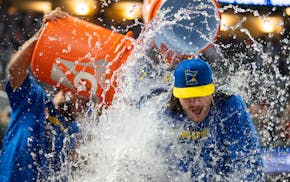
Paddack clings to perfection into the sixth inning, pitching the Twins past the Giants
Reusse: Twins play Giants, triggering Mays memories and a question: Can we get the Black players back?
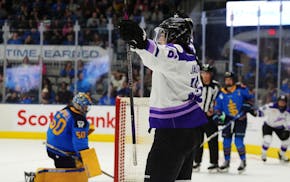
Frost turn away Toronto, even PWHL playoff series at a win apiece
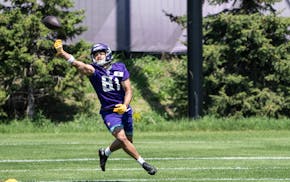
Montigo Moss, working to make the Vikings roster, provides an update on famous father Randy
